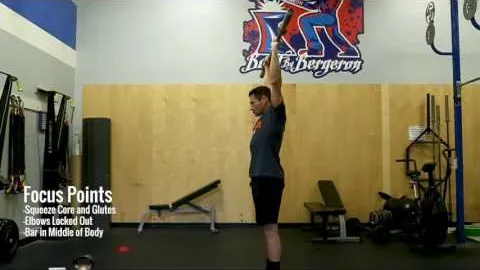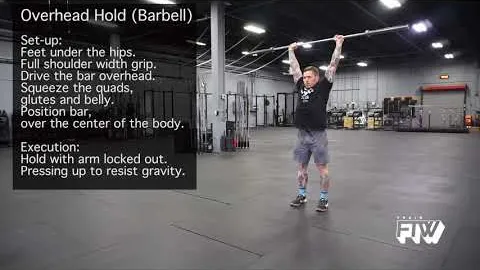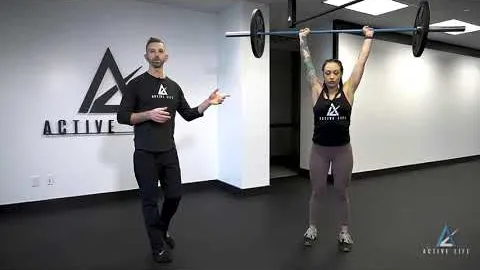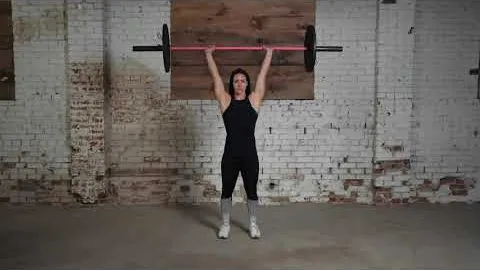



Barbell Overhead Hold: A Powerful Exercise for Strengthening Your Upper Body
Are you looking for an effective exercise that targets your shoulders, arms, and core? Look no further than the Barbell Overhead Hold. This compound exercise not only helps in building muscular strength but also enhances stability and balance throughout your entire upper body. In this comprehensive guide, we will delve into the benefits, proper technique, variations, and safety precautions of the Barbell Overhead Hold.
Benefits of Barbell Overhead Hold
The Barbell Overhead Hold offers numerous benefits for individuals of all fitness levels. Whether you're an athlete, weightlifter, or fitness enthusiast, incorporating this exercise into your routine can lead to significant improvements in your upper body strength and overall fitness. Some of the key benefits of the Barbell Overhead Hold include:
Shoulder and Arm Strength: The primary muscles worked during the Overhead Hold are the deltoids (shoulders), triceps (arms), and upper back. This exercise helps to develop strong, functional muscles in these areas, which is crucial for activities such as lifting, pushing, and pulling.
Core Stabilization: Holding a heavy barbell overhead requires a high level of core engagement. The abs, lower back, and obliques work together to maintain a stable and upright posture. By strengthening your core, you improve your overall balance and stability.
Improved Posture: As you maintain an upright position with the barbell overhead, you naturally correct any postural imbalances and strengthen your postural muscles. Over time, this can lead to improved posture both in and out of the gym.
Increased Grip Strength: Holding a barbell overhead demands a strong grip. Regular practice of the Overhead Hold can significantly enhance your grip strength, making it easier to perform exercises that involve gripping, such as deadlifts and pull-ups.
Enhanced Shoulder Stability: The Overhead Hold challenges your shoulder stability by forcing the muscles around your shoulder joint to work harder to maintain proper alignment. This can help prevent injuries and improve your performance in other shoulder-intensive exercises.
Proper Technique
To maximize the benefits and minimize the risk of injury, it's crucial to perform the Barbell Overhead Hold with the correct technique. Follow these steps to ensure proper form:
Set-Up: Start by standing with your feet shoulder-width apart and the barbell resting on the front of your shoulders. Position your hands slightly wider than shoulder-width apart, palms facing forward.
Lift and Press: Take a deep breath and brace your core. Engage your legs and, using a powerful leg drive, lift the barbell overhead. Fully extend your arms, keeping your elbows locked throughout the movement.
Hold and Breathe: Once the barbell is fully extended overhead, focus on maintaining a strong, upright posture. Keep your head aligned with your spine and your core engaged. Take slow, controlled breaths throughout the duration of the hold.
Lower with Control: When you're ready to end the hold, slowly lower the barbell back to the starting position, ensuring that you maintain control throughout the movement.
Variations of Barbell Overhead Hold
Once you have mastered the basic Barbell Overhead Hold, you can explore different variations to add variety and challenge to your workout routine. Here are a few variations that you can try:
Single-Arm Barbell Overhead Hold: Instead of using both hands to hold the barbell, hold it with just one hand. This variation not only increases the demand on your shoulder and arm muscles but also requires additional stability and core control.
Bottom Up Barbell Overhead Hold: Start with the barbell resting on the ground in front of you. Lift the barbell so that the plates are facing up towards the ceiling and the bar is parallel to the floor. Hold the barbell in this position, with your arms fully extended overhead.
Zottman Barbell Overhead Hold: Perform the standard Barbell Overhead Hold, but with your palms facing towards your body at the top position. This variation places additional emphasis on the forearms and grip strength.
Safety Precautions
While the Barbell Overhead Hold is a safe and effective exercise, it's important to consider the following safety precautions:
Choose the Appropriate Weight: Start with a weight that you can comfortably hold overhead for at least 20-30 seconds. Gradually increase the weight as you become stronger and more experienced.
Maintain Proper Form: Always prioritize maintaining proper form and technique throughout the exercise. Avoid arching your back or excessively shrugging your shoulders.
Warm-Up and Stretch: Prior to performing the Barbell Overhead Hold, ensure that your muscles and joints are adequately warmed up. Incorporate stretching exercises that target your shoulders, arms, and upper back.
Seek Professional Advice: If you're new to the Barbell Overhead Hold or have any pre-existing shoulder or back issues, consider consulting with a fitness professional or physical therapist for guidance and modifications.
Incorporating the Barbell Overhead Hold into your fitness routine can lead to significant improvements in upper body strength, stability, and overall fitness. Remember to start with lighter weights, maintain proper form, and prioritize your safety at all times. With consistent practice and progressive overload, you'll be well on your way to achieving your fitness goals.
If you're looking for a gym, fitness club or yoga studio, you've come to the right place.
You can find information about gyms in your area. Browse catalog of gyms and find gyms with classes which are you looking for.
On gym page you can find simple information like address, phone or website. You can find list of available classes. You can check availability of personal training or small group classes. On place page you can also see information about open hours.
You can find gyms near you with amenities, courts, studios and equipments.
Use our map to find gym at your city or district.
In Gym Navigator you can find list of exercises with movies for many body parts.
You can browse exercises catalog and find exercises the best of you.
You can also find exercises grouped into workout plans, which you can use to improve you body. Each routine show you exercises one by one and give you possibility to count you progress and count down rest time.